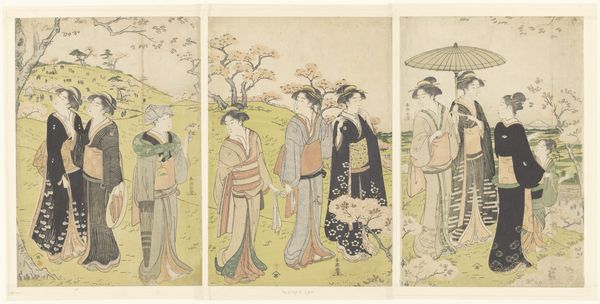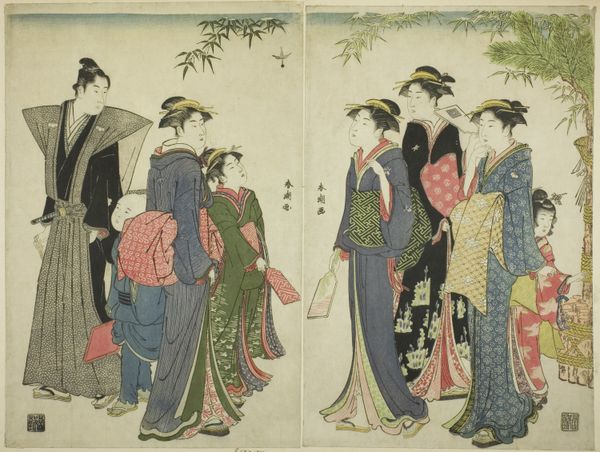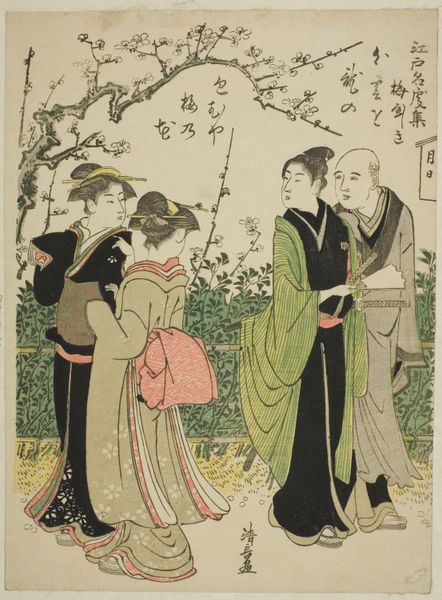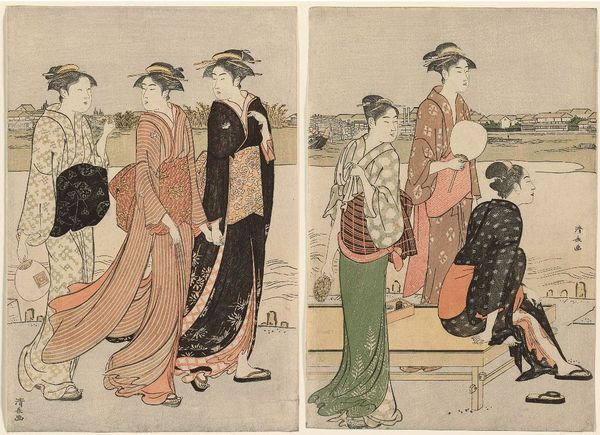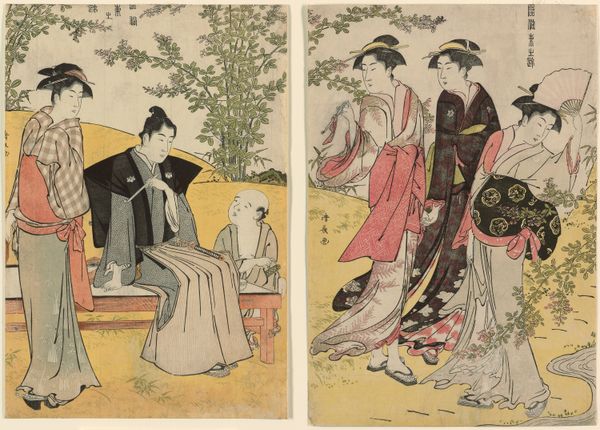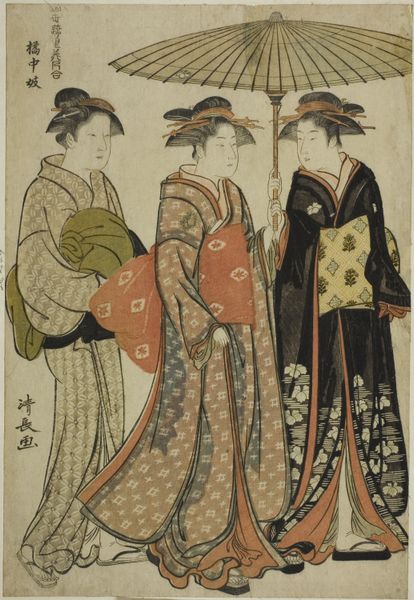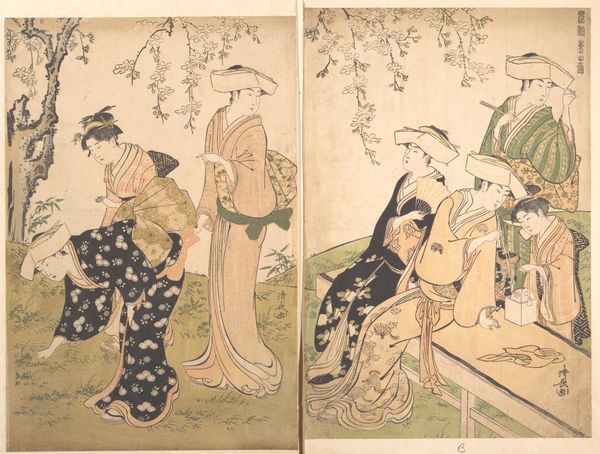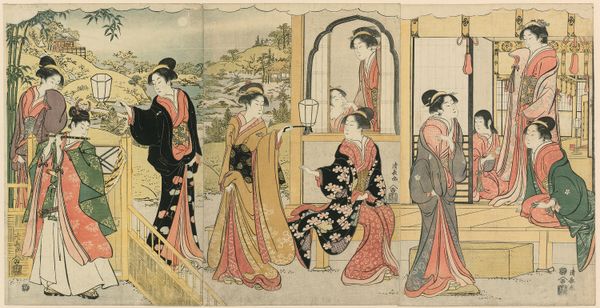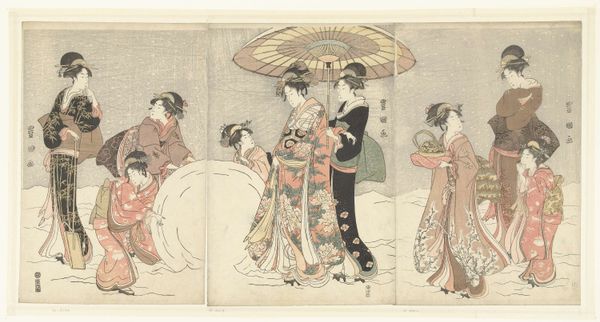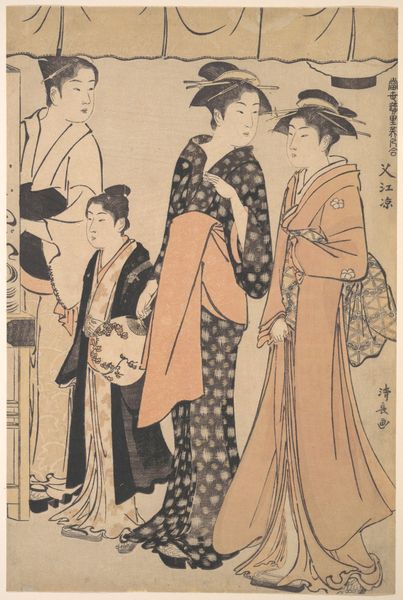
print, woodblock-print
# print
#
landscape
#
ukiyo-e
#
figuration
#
woodblock-print
#
genre-painting
Dimensions: 38.8 × 52.2 cm (overall), 38.6 × 26.2 cm (right sheet), 38.8 × 26.3 cm (left sheet)
Copyright: Public Domain
Curator: This print, titled “Matsuchi Hill after Snowfall,” comes to us from the late 18th century, around 1785, crafted by Torii Kiyonaga. Notice the diptych format, and that it's rendered with meticulous detail via the woodblock printing method. Editor: There's an almost palpable quietness. The pale whites and grays of the snow, contrasted with the muted colors of the kimonos... it feels very serene, a hushed tableau. Curator: Kiyonaga worked during a time of relative peace and prosperity, and these images, part of the *ukiyo-e* tradition, really show that, don't they? Ukiyo-e were often mass-produced and consumed by a broad segment of society; depictions of beauties like these were status symbols reflecting aspirations for refined living. It’s less about the grand historical narrative, more about the daily experience, leisure, fashion… Editor: Exactly. These women, beautifully dressed, are symbols themselves – not just of status, but of ideals of feminine beauty at the time. Observe how elongated their figures are; the elegant slope of their shoulders. And the snow itself… is it about the season, or a reflection on impermanence? Snow is, after all, fleeting, turning to slush, echoing *ukiyo*, "the floating world". Curator: I agree; this “floating world” of passing pleasures permeates Japanese art and thought. What I find interesting, too, is the composition—Kiyonaga arranges the figures to lead our eyes through the scene, doesn't he? Look at the line created by their gazes. This technique mirrors societal structures of observation—who gets looked at, who does the looking... it says much about power and social interplay. Editor: Absolutely, these figures weren't just frozen in a landscape; they actively construct their narratives. The gifts they seem to carry, for example: tiny seeds or plants could symbolize the new beginnings, something that the snow season only alludes to, a harbinger of renewal amidst perceived stillness. Curator: Considering the sociopolitical moment, this image offers more than initially meets the eye. These women navigate a society that simultaneously confined them and elevated them as objects of beauty and desire. The image becomes a record, reflecting societal gazes, the aspirations, and constraints that structured their lives. Editor: A visual poem about delicate beauty, ephemeral moments, and the social ballet played out against the backdrop of a silent, falling world. Something to truly savor and unpack.
Comments
No comments
Be the first to comment and join the conversation on the ultimate creative platform.

